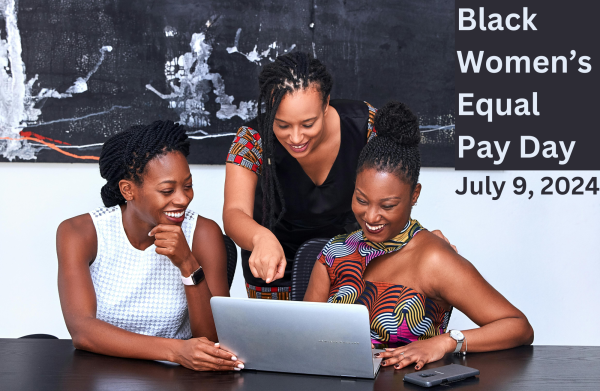WTS-Boston DEI in Motion: Black Women's Equal Pay Day

When thinking about initiatives to eliminate implicit biases in the workplace, the gender wage gap is one of the most prominent considerations. Since the 1960s, the Equal Pay Act has mandated equal pay for all individuals irrespective of gender. In 1996, Equal Pay Day was established to highlight how much longer women need to work into the new year to earn what men did the previous year. This year, Equal Pay Day fell on March 12th. The intersectionality of race, ethnicity, and gender exacerbates the wage gap, making it essential to acknowledge the heightened disadvantage faced by women of color [1].
July 9th marked Black Women’s Equal Pay Day, a national day to recognize the impact of the gender pay gap on Black women [2]. A 2022 census study revealed that Black women earn just 66 cents for every dollar paid to their White, non-Hispanic male counterparts. Despite reaching a record high employment rate in 2022, Black women continue to experience a significant wage gap. Additional challenges they face include limited career growth opportunities, difficulties in building savings, and maintaining financial stability [3][4]. Student loans, particularly those for advanced degrees like doctorates, further hinder their financial stability even before entering the workforce.
Several strategies can help eliminate the wage gap and mitigate implicit bias in the workplace. Implementing salary transparency laws and conducting pay equity audits by external organizations can ensure companies provide equal pay regardless of gender. Affordable and subsidized childcare is also vital for giving Black women greater access to job opportunities, as historically, 80% of Black women are the primary breadwinners for their families. Raising state minimum wages can also help narrow the wage gap and establish a better starting point for Black women [5].
Addressing implicit bias in the workplace, Black women are often underrepresented in high-paying jobs and face limited growth due to systematic challenges. Transportation inequalities in the U.S. also limit Black women's access to employment opportunities. Public transit options, especially buses serving minority communities, have historically been unreliable. Initiatives like the Bus Network Redesign Project by the MBTA aim to improve the accessibility and reliability of buses that many rely on as their primary mode of transportation [6][7].
[1] https://www.americanprogress.org/article/women-of-color-and-the-wage-ga…
[2] https://www.equalpaytoday.org/
[4] https://nationaltoday.com/national-black-womens-equal-pay-day/#:~:text=….
[5] https://www.forbes.com/sites/hollycorbett/2023/07/27/black-womens-equal…
[6] https://transitcenter.org/what-does-our-equity-dashboard-reveal-about-t…
[7] https://www.mbta.com/projects/bus-network-redesign/bus-network-redesign…